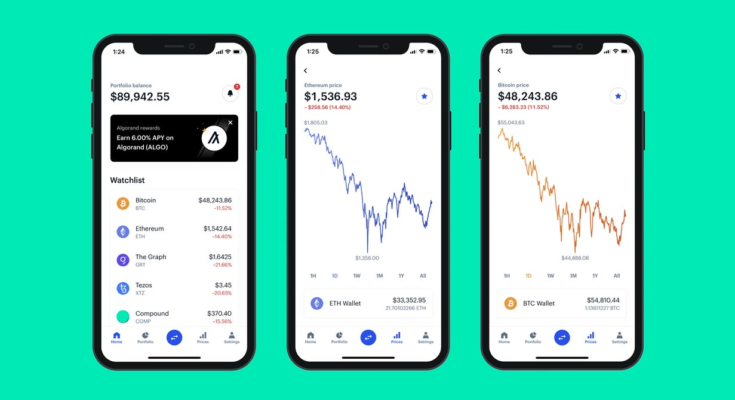If people who buy cryptocurrencies intended only to hold on to them as speculative investments, there’d be no real need for crypto wallets. Exchanges and online brokerages that convert dollars to, say, bitcoin would store all that digital currency for you like so much money in a bank account.
But crypto wallets (aka “blockchain wallets”), which have been around since the early days of Bitcoin, serve a lot of purposes beyond just HODLing that cryptocurrency with no fees.
Wallets can also store digital collectibles like NFTs that you might want to buy, sell, trade, or transfer to someone else, or even to another wallet you own. They can make it easier to send and receive digital money to and from other people’s accounts, crypto exchanges, or digital marketplaces. And, because they’re typically decentralized, even if they’re created by an exchange like Coinbase Wallet or Binance’s Trust Wallet, you control the account. That means only you are responsible for what’s in the wallet, remembering the password and secret seed phrase that unlocks the wallet, and managing the funds that it holds.
While the concept is simple—a place to store your cryptocurrency and use it—choosing a crypto wallet can be an incredibly intimidating experience. There are somewhere in the neighborhood of 150 different wallets to choose from. Some handle only a few popular cryptocurrencies; others let you trade and store obscure types of digital tokens. Ready to get started?
Choose a Wallet
The first thing you need to decide is what you plan to do with your cryptocurrency.
If the NFT market is what you’re interested in, choose a wallet that can connect to NFT marketplaces such as OpenSea, SuperRare, and Solanart. Some of these marketplaces operate on a particular blockchain, and that might determine your choice of wallet. For instance, OpenSea supports Ethereum, Polygon, and Klatyn blockchains; most transactions use Ethereum and a lot of NFT traders use Metamask to buy, sell, store, and list for purchase NFTs they got through OpenSea. Some of the top NFTs on OpenSea include “CryptoPunks” and “Bored Ape Yacht Club,” which you may have heard of.
For Solanart, which relies on the Solana blockchain, where NFTs like “Degenerate Ape Academy” are traded, you’d probably want to choose a wallet that is commonly used by Solana cryptocurrency holders such as Phantom, Solflare, or Sollet.
If you don’t care about NFTs and just want a place to store or to send and receive cryptocurrency, Coinbase, Trust Wallet, Atomic, and Exodus are good places to start.
Another thing to ask before you choose a wallet: Is there a mobile app version? Some wallets are intended for use on desktop computers as a browser extension and are not as mobile-friendly as you might expect, especially if they’re not as established as some of the wallet software mentioned here.
If you are most concerned about security, you might want to consider a hardware crypto wallet. These frequently come in the form of a USB stick that you can disconnect from your system (and the internet) for added security. We’ll talk more about that in the last section below. Some examples of popular hardware crypto wallets include Trezor ($63 to $220 for its two models) and the Ledger Nano X ($149).



